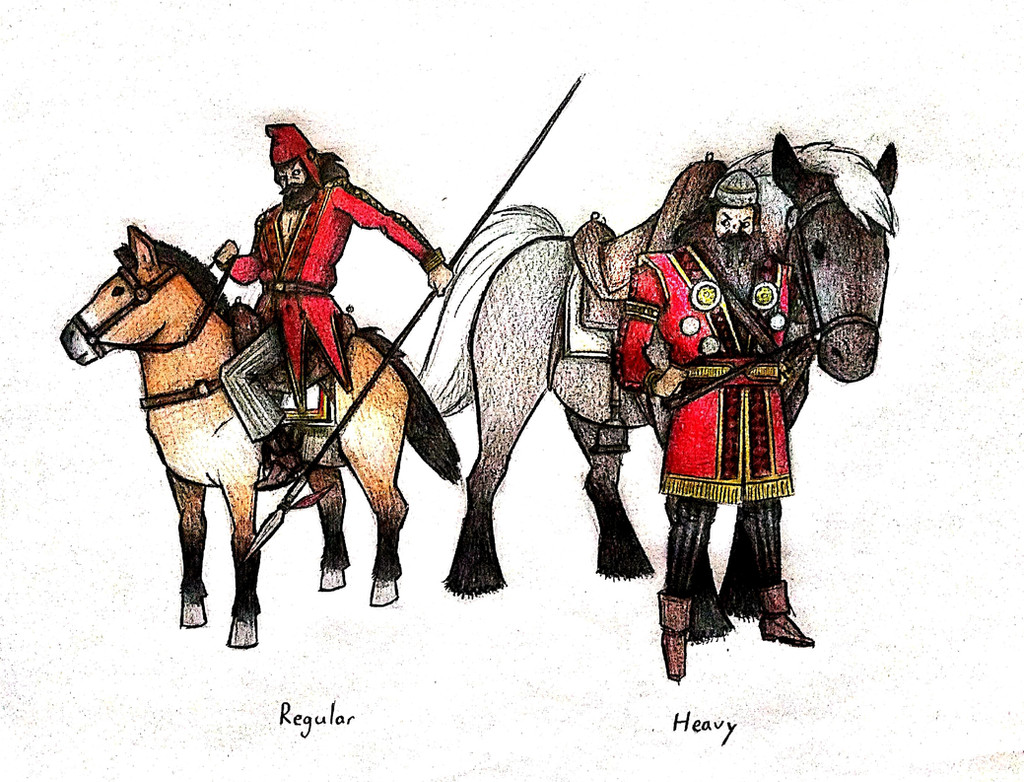HOME | DD
 Avapithecus — Scythian Horselords (1)
Avapithecus — Scythian Horselords (1)

#character #design #history #horse #referencesheet #scythian #steppe #warriors
Published: 2023-05-10 12:37:33 +0000 UTC; Views: 3502; Favourites: 50; Downloads: 0
Redirect to original
Description
The Eurasian Steppe is a vast and untamable stretch of rolling hills layered in nothing but grass and open sky. In many ways, this green desert is an ocean in its own right, unable to grow anything of significant size in significant quantities. It is ideal for grazing, but anything more requires crossing this immense sea to its more farmable borders for trade, and it is not an easy journey. As such, for thousands of years, the Eurasian Steppe has produced many nomadic cultures always on the move to find new land to feed their animals, usually making themselves an existential nuisance to the so-called "civilized" world beyond the borders of the Steppe. Later centuries saw the Huns terrorize Rome, the Turks harass Constantinople, and the Mongols go on the warpath to lay claim to the entire world. However, in antiquity, the most prominent horsemen of the apocalypse were the Scythians.The Scythians were a tribal Iranian-speaking people who migrated into the Caspian Basin around the 10th century BCE, displaced from their original stomping grounds out East by related nomadic invaders such as the Massagetae. The exact timing is a little fuzzy, as the Scythians did not leave any written records themselves. We only start to hear about them in written form when they start migrating into the "civilized" world and start breaking all their stuff. Nothing drives the pen quite like being invaded, as the Assyrians found out when the Scythians started raiding their borders in 680 BCE. In 612 BCE, the Scythians allied with their Iranian cousins, the Medes, to sack the Assyrian capital of Nineveh and basically dismantle the Empire. Don't feel too bad, the Assyrians were kind of dicks. Though to be fair, so were the Medes, who turned against their "barbarian" cousins from the Steppe and thus began a long rivalry between the sedentary powers of Iran and the nomadic tribes to their north. The legendary king Cyrus the Great himself is said to have been slain in battle by the queen of the Massagetae, Tomyris, in 530 BCE. She had him decapitated and stuffed his head in a jar of blood, claiming she has "at least quenched his thirst for blood." Jaysus lady, that's hardcore.
On the subject of Scythian women, many of them were extremely well off and trained to be warriors just the same as men in their society. When you live in the middle of nowhere and survival is the top gig, it doesn't pay to be a bigot. You need all hands on deck. Indeed, it is often cited that the Scythians are the direct inspiration behind the Amazon warrior women of Greek mythology, and it's not hard to see the resemblance. A Scythian warrior was expected to be trained with a bow basically from the moment they could hold one. In battle, the efficiency of their mounted archers was, frankly, terrifying. Constantly on the move, they could bring hell down from the sky while their enemies on foot struggled to land individual strikes. While many great leaders of Greece and Iran would find glory in repulsing smaller Scythian raids, such as Philip II of Macedon's campaign against them in 339 BCE, the Scythians would only truly be outmatched by a power birthed from the Steppes just like themselves. In the 2nd century BCE, the Xiongnu, predecessors to the infamous Huns, migrated Westward, pushing out the local nomads in a domino chain which eventually led to the Scythian homeland being overrun first by the Sarmatians, then eventually the Huns themselves. A few Scythian tribes had migrated into Bactria and India, but these folks settled down and heavily assimilated into local Buddhist culture, so not quite what we traditionally imagine when we think "Scythians", but still noteworthy. By the 3rd century CE, the Scythians largely disappear from historical documents, dispersed and assimilated into the cultures of the new horselords. Even history's great tropes, it seems, are vulnerable to themselves.
Design notes, I split the Scythians into two drawings because I wanted to include their horses, and that took up a lot of space. Was it necessary? No. But given how quintessential horsemanship was to the Scythians, I felt it appropriate in order to convey them accurately. Honestly the biggest challenge is making their smurf hats look intimidating. That and… drawing the horses themselves. I drew these before I really began practicing animal anatomy, so that's why they look a little wonky. And yes, I realize the horse for the regular is a Przewalski's horse, which is a wild species not at all built for riding whatsoever but I like the way it looks so shhhh. I'm especially happy with the elite. It's a pain in the ass to get all those little scale pieces colored in an alternating pattern like that, but damn it looks slick. The real life samples of Scythian armor and ceremonial robes are just absolutely gorgeous. These people were a culture of master craftsmen and elite weavers, and I hope I did it justice with these pieces.






















